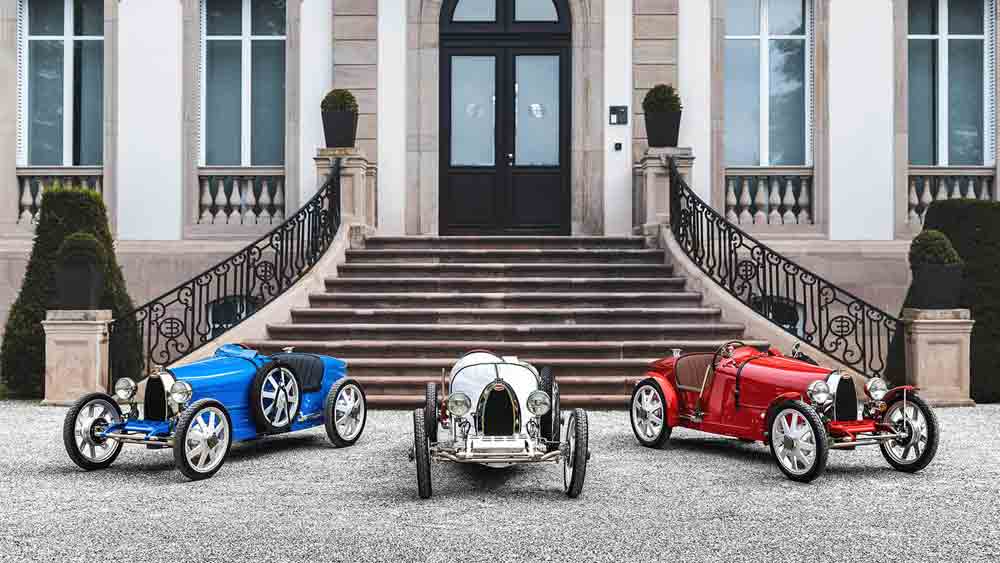13 Best Hypercars With Blistering Speed And Matching Price Tags
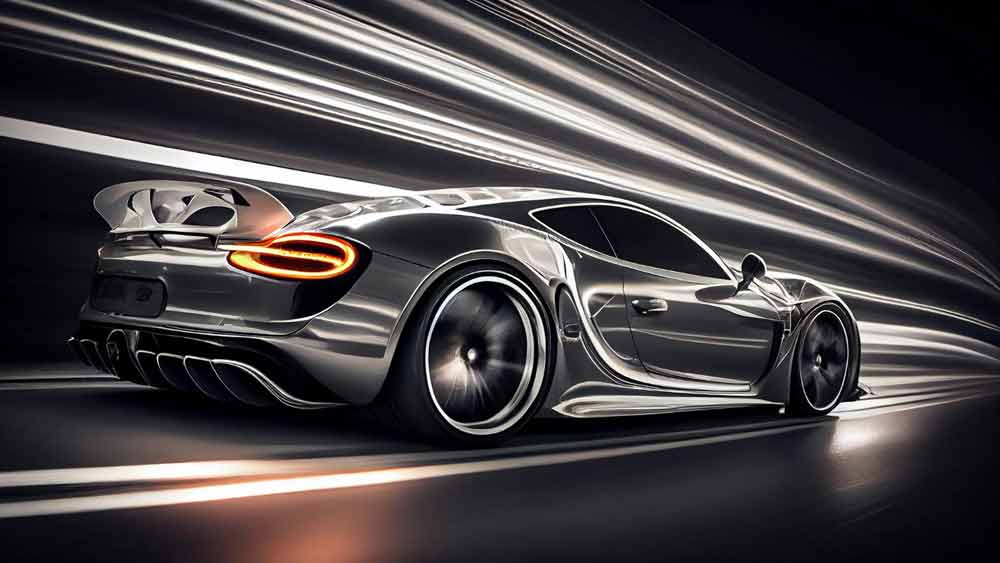
Welcome to a world where roads transform into racetracks for the mightiest of machines. Hypercars aren’t just cars – they’re the superheroes of the automotive universe, with mind-boggling speed, jaw-dropping looks, and a price tag that defies gravity. One excellent example of such a hypercar is the Lamborghini Veneno Roadster, which costs a whopping $8.3 million. Envision an eternal rivalry amongst automakers, each vying to craft the best hypercars that are the fastest and most aerodynamic, offering an utterly astonishing driving experience. The result? A collection of cars that’s like a dream for collectors and fans.
These beasts are not your regular cars; they’re like rockets on wheels, often packing more than 1,000 horsepower, and some even run on electricity! So, get ready to dive into a world where cars become legends and speed is an art form.
Top 13 Hypercars In The World Of 2024
1. Mercedes-AMG One – $2.72 million

After a considerable duration, the Mercedes-AMG One project has reached its completion, as production finally commenced in Coventry. Displaying its capabilities with an astonishing 6min 35.183sec lap time at Nürburgring, this hypercar, born from F1, stands as an exceptionally bold creation.
Using an evolved version of the 1.6-liter V6 hybrid engine sourced from its Formula 1 project, the One generates a robust 1048bhp, sufficient for a rapid 0-62mph in 2.9 seconds and a peak velocity of 219mph.
The statistics may not be exceptionally remarkable for a car valued at $2.72 million, partly due to its weight of 1695kg, which could temper its performance. Nevertheless, it remains a fascinating piece of machinery and a type we probably won’t encounter again.
Key Features:
- 1.6-liter V6 hybrid engine with 1048 bhp
- 0-62 in 2.9 seconds
- 219 mph top speed
- 6:35.183 lap time at Nürburgring
2. Rimac Nevera – $2.2 million
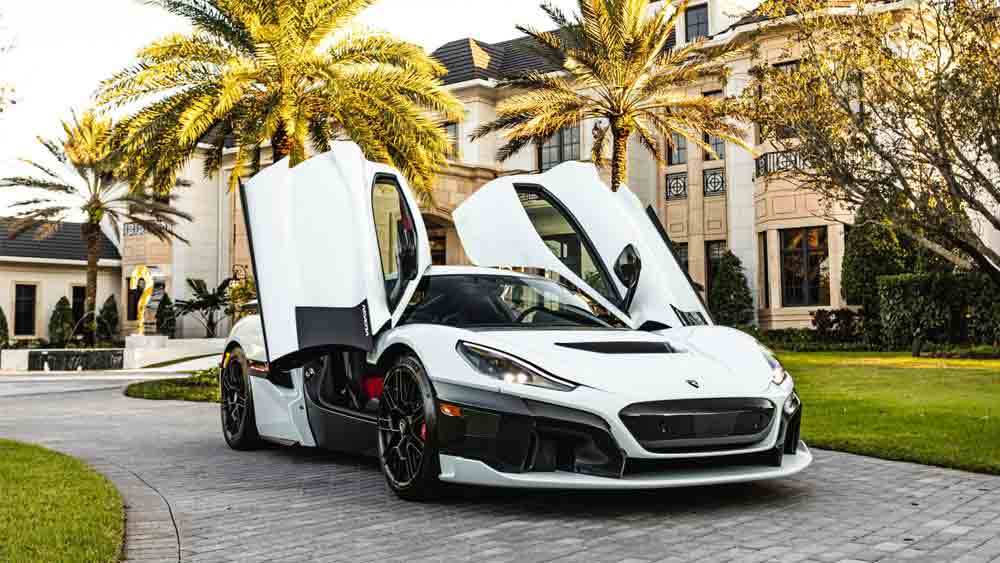
The count of electric hypercars is quite extensive, yet the Rimac Nevera stands singularly worthy on this roster, succeeding the Concept One. It emerges as the first genuine next-gen hypercar, showcasing unmatched performance in contrast to its internal combustion peers. Proving itself as the ultimate champion, it secures the titles of the fastest accelerating production vehicle (matching the top muscle cars of the current era) and the fastest electric car, reaching an apex velocity of 258mph.
Every wheel receives power from its dedicated electric motor, providing an extensive range of options for power allocation and incorporating some impressive electronic stability maneuvers as well. The total combined power amounts to 1888bhp, establishing its supremacy in our list of best hypercars, while the torque statistic reaches a staggering 1740 lb-ft, which is arguably even more astonishing.
Given Rimac’s current role in providing technological solutions and knowledge to various companies, including Porsche and Hyundai, it’s quite understandable that the company has successfully developed a thoroughly impressive vehicle for drivers. Despite the seemingly unbelievable performance statistics and its weight of 2150kg, the hypercar exhibits surprising dynamics that render it even more usable than its numerical values might indicate.
Also Read: Porsche 906
Key Features:
- Four electric motors creating 1,813 hp
- 258 mph top speed
- 0-60 mph in 1.85 seconds
- ¼ miles in 8.6 seconds
- Battery Pack: liquid-cooled lithium-ion, 117.0 kWh
- Limited to 150 units
3. Bugatti Chiron – $3.3 million
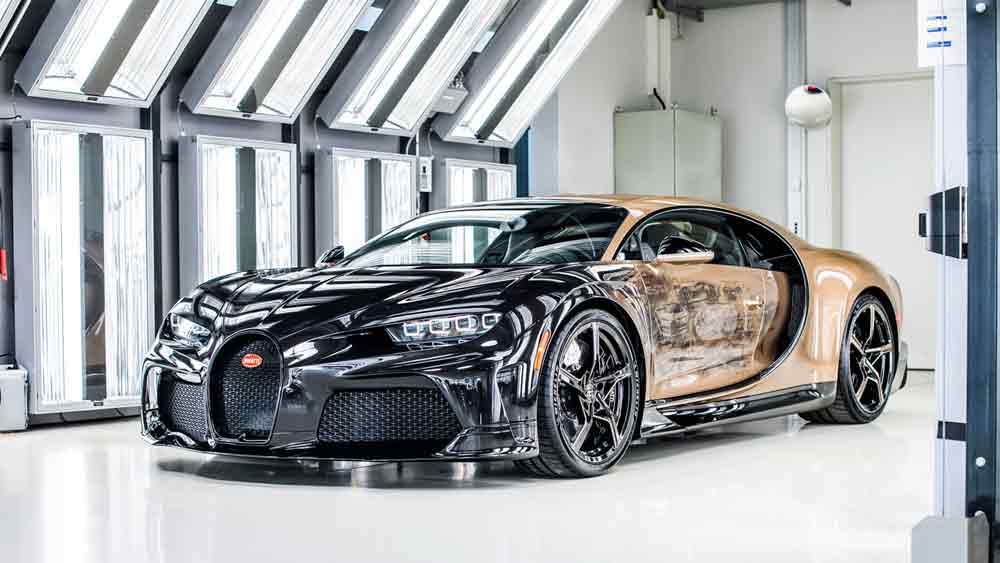
Bugatti’s successor to the Veyron exhibits increased speed and power compared to it, yet the company’s emphasis extended beyond velocity during the car’s design phase. The intention was to ensure a convenient driving experience, both during urban commuting and unrestricted highway acceleration. Forbes states the Chiron’s drivability paralleled that of a Bentley, with remarkable ease at legal speeds and unwavering stability even at significantly high velocity. When comparing Bugatti Chiron vs Veyron, the Chiron’s advancements become evident, as it surpasses its predecessor in both performance and luxury.
The Chiron Super Sport 300+, vying for the title of the “swiftest production car,” achieved a single-directional speed milestone of 304.77 mph with Bugatti’s test driver Andy Wallace at the helm. Nevertheless, this achievement lacks recognition in the Guinness World Records, which mandate a round-trip—a condition Bugatti cited as unsafe for a conclusive attempt. That said, 300+ mph speed makes it the fastest production luxury car in the world right now.
Also Read: Most Expensive Bugatti Cars In The World
Notably, the car’s record-setting attempt occurred during its pre-production prototype phase, meaning it was not a production model. Regardless of its global status as the definitive speed champ, the Chiron undeniably stands as an extraordinary testament to engineering prowess. Moreover, its user-friendly nature contributes to its allure; owners are simply required to adhere to driving protocols.
If you cannot afford this multi-million dollar luxurious speedster, do not worry. Here are the best fastest cars under $20K we covered on High Stuff.
Key Features:
- 8.0-liter 16-cylinder powerplant with 1500 horsepower
- 0-60 mph in 2.3 seconds
- Top speed of 261 mph
- 1/4-Mile: 9.1 sec @ 161 mph
- Limited to 540 units (500 Chiron and 40 Bolides)
4. Koenigsegg Jesko – $3 million
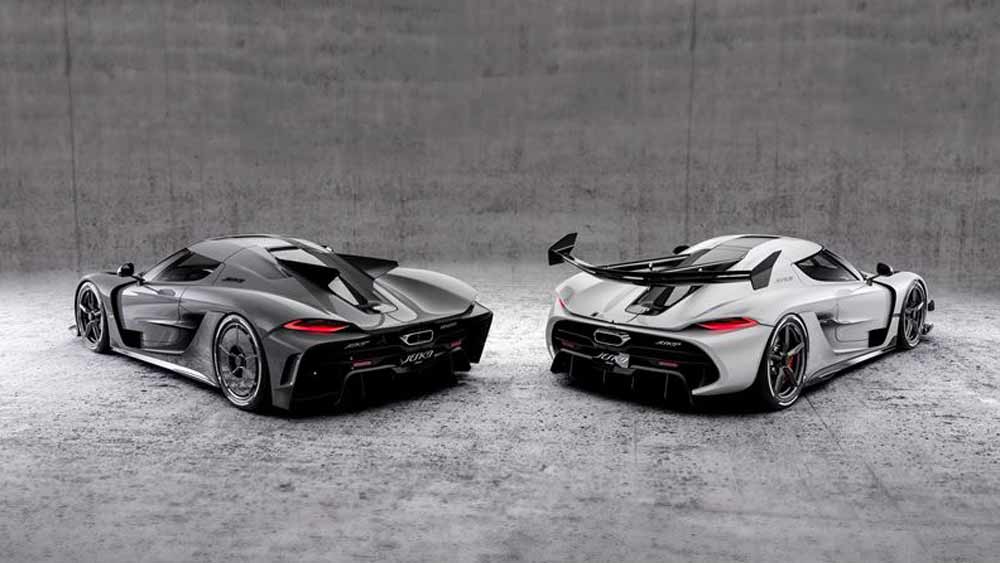
One of the top hypercars from Koenigsegg, the Jesko flaunts around 1,600 horsepower and well over 1,000 kg of downforce, as reported by Koenigsegg Chicago. In its Absolut configuration, it asserts its dominance as the fastest car globally, potentially reaching speeds exceeding 330 mph. However, this assertion has yet to undergo practical testing.
This model pays homage to the company’s CEO, Christian von Koenigsegg’s father, who, as per Koenigsegg Chicago, played a crucial part in steering the business aspects of the Swedish hypercar enterprise in its initial phases.
In addition to being recognized as the brand’s first hypercar to surpass 300 mph, the Jesko possesses a reimagined exterior design distinct from its predecessor, the Agera. The initial pre-production model was elegantly adorned in Tang Orange Pearl. However, vehicle owners will have the opportunity to collaborate directly with the manufacturer to meticulously select their personalized color palettes. This approach ensures that each car stands apart, boasting its own unique identity.
Also, check out our top GT cars, offering a blend of speed, power, and comfort.
Key Features:
- A twin-turbocharged 5.0-liter V-8 with 1280 hp or 1600 hp on E85
- 0-60 mph in 2.5 seconds
- 300 mph top speed with theoretical spеed as high as 330–350 mph in optimal conditions
- Limited to 125 units
5. Bugatti Centodieci – $9 million
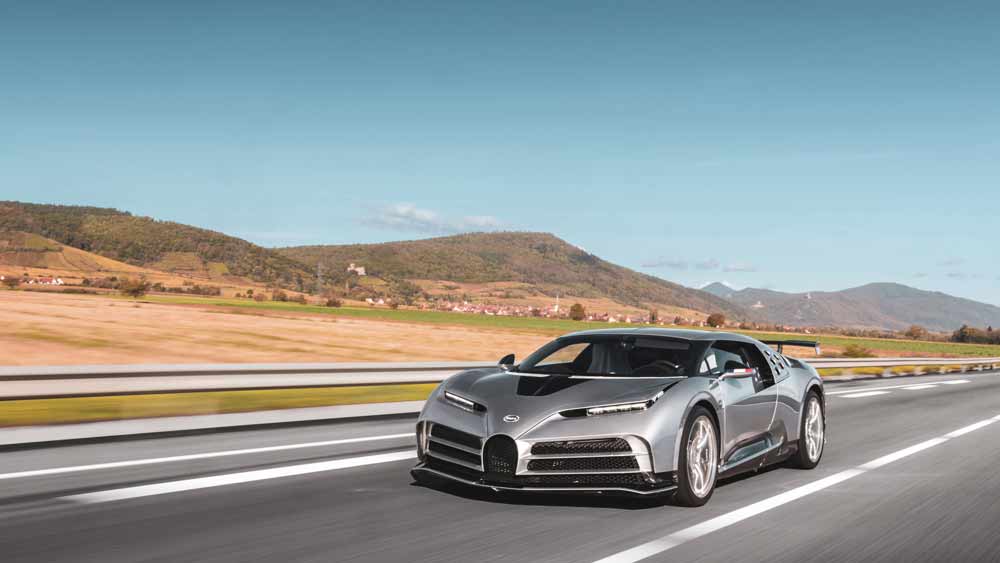
Having a production run limited to merely ten units, the Centodieci is that rare automobile one might never chance upon within many lifetimes. With a staggering price of $9,000,000, affording one could demand an equal stretch of lifetimes. Although certain vehicles like the Koenigsegg Jesko might feature a more charismatic face, this top-of-the-line hypercar constructs upon a heritage that old Bugatti models helped establish. Among the many fascinating Bugatti facts, the Centodieci pays homage to the brand’s rich history, drawing inspiration from the EB110 while incorporating cutting-edge technology to create a vehicle that bridges the past and the future.
Stemming from the Chiron lineage, albeit infused with enhanced potency, the 2022 Centodieci includes an 8.0-liter fourfold-turbocharged W16 engine, churning out an overwhelming 1,578 horsepower and 1,180 lb-ft of torque.
Discussing its speed, the Centodieci surpasses the Chiron in straight-line acceleration, achieving 0-124 mph in merely 6.1 seconds – notably 0.4 seconds swifter than the Chiron. Although its 0-60 time remains “under 2.4 seconds,” its top speed of 236 mph falls short of the Chiron’s 261 mph. This is due to Centodieci’s super exclusive and highly dedicated nature, featuring only the finest materials available.
Key Features:
- 8.0-liter quad-turbo W16 with 1,578 hp
- 236 mph top speed
- 0-124 mph in 6.1 seconds
- Limited to ten units
6. Koenigsegg Regera – $2 million

Continuously pushing the boundaries of cutting-edge propulsion technology, Swedish luxury car manufacturer Koenigsegg has effectively demonstrated its well-earned position within the realm of exotic cars. Achieving unparalleled performance levels through hybrid advancements is an impressive accomplishment, precisely what the Koenigsegg Regera supercar—named after the Swedish word for “reign”—has been accomplishing since it was first unveiled in 2016.
Beyond the 2020 Regera’s immensely potent hybrid powertrain lies its luxuriously appointed interior, replete with many upscale features that defy expectations for a vehicle of such astonishing speed. Regrettably, the limited production run of 80 units has been completely spoken for, leaving affluent prospective buyers in search of multi-million-dollar car offerings to peruse the second-hand market for high-performance supercars. What a shame!
The Koenigsegg Regera comes with a twin-turbo 5.0-liter V-8 placed behind the seating area, collaborating with three electric motors. The complete system power amounts to 1500 horsepower. Dispensing with the need for a traditional transmission, the Regera employs the Koenigsegg Direct Drive system, channeling the combined power of its electric motors and gasoline mill exclusively to the rear wheels.
Key Features:
- 5.0-liter twin-turbo V8 with 1,500 hp
- 251 mph top speed
- 0-249-0 mph in 28.81 seconds
- Limited to 80 units
7. Aston Martin Valkyrie – $3.5 million
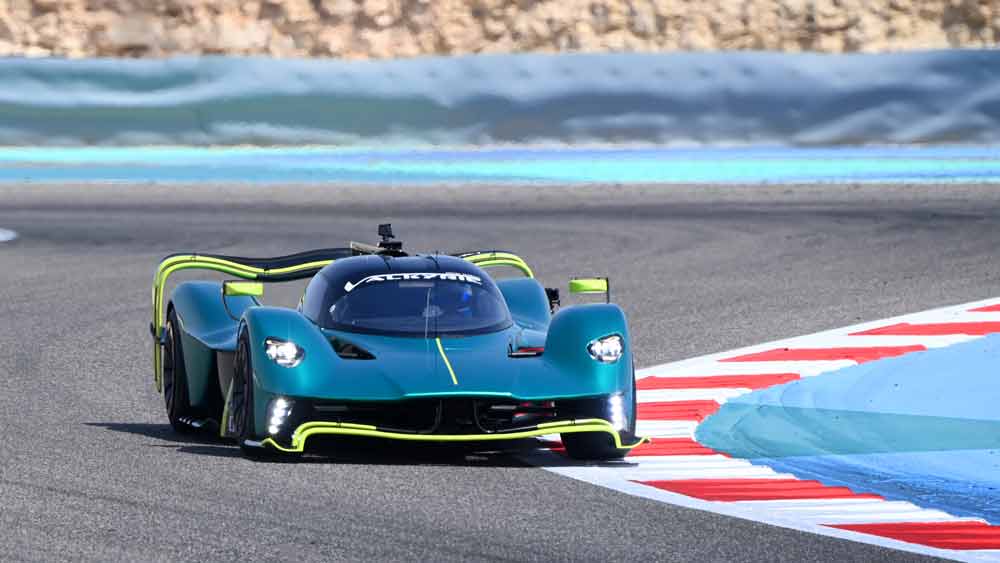
When examining design philosophy, one could aptly portray the Aston Martin Valkyrie as incredibly “uncompromising.” Created by the ingenious mind of Red Bull F1’s technical head and a versatile aerodynamics expert, Adrian Newey, this stunning British marvel materialized to offer unsurpassed performance, unwaveringly focused on destroying lap times.
Despite featuring license plates, front lights, and turn indicators, the Aston Martin is a thoroughbred racer. The lightweight carbon chassis was meticulously engineered for robustness, while the sleek body, hugging the ground, bears the hallmarks of wind tunnel analysis and integrates modifiable aero panels.
The suspension boasts an ingenious design, with its dynamically adjustable ride height aiming to maintain the car’s stability during aero maneuvers and corners. However, perhaps the standout feature is the naturally aspirated (yet discreetly hybrid-assisted) 6.5-liter V12 engine, which redlines at an exhilarating 11,000rpm, delivering an astonishing 1139 hp jolt, propelling the car from 0 to 60mph in an astonishing 2.5 seconds, and reaching an impressive top speed of 220mph.
Within the minimalist cabin, space is at a premium, living up to its two-seat designation, demanding noise-canceling ear gear to counteract the deafening roar of the expertly crafted Cosworth motor. Sensory inundation is virtually guaranteed, and for those with courage, few vehicles can rival its track performance.
It’s true that the active suspension somewhat diminishes road feel, and the standard Michelin tires struggle to harness the formidable forces unleashed by the Valkyrie fully. Nevertheless, scarcely any contenders come close in terms of pure automotive engagement.
Key Features:
- 6.5-liter V12 engine with 1,139 hp and redlining at 11,000rpm
- 220 mph top speed
- 0-60 mph in 2.5 seconds
- ¼ mile in 7.7 seconds
- Limited to 150 units
8. Lotus Evija – $2.3 million

Should you have any uncertainty regarding the direction of the high-performance breeze, the emergence of two EVs within our 10 best hypercars ought to dispel that ambiguity. While our affection toward wild, fast, and theatrical internal combustion engine vehicles remains resolute, it’s undeniable that the charm of immediate, potent torque, perfectly distributed around each corner, is compelling – a space in which the Lotus Evija truly excels.
Whether powered by battery or not, the essential metrics of this electric hypercar are meticulously ensured. The 70kWh propulsion battery and set of four electric motors contribute to an overall weight of around 1700kg.
Nonetheless, it generates an exciting 2000 metric horsepower at its highest point. It relies on Pirelli P-Zero Trofeo R tires and boasts the remarkable capability of accelerating from 0 to 186mph in a mere 9 seconds. It is over 4 seconds faster than Bugatti’s extraordinary Chiron.
During the drive, you discover a vehicle that lacks a sense of theatricality during takeoff from lower speeds. However, it promptly accelerates to speeds exceeding three figures with an unwavering power. Its handling remains as stable and confident as anticipated from a Lotus, even with a four-wheel-drive system. Encouraging indicators!
Key Features:
- Four electric motors produce exactly 1,972 hp
- 0 to 62 mph in below 3.0 seconds
- 0 to 186 mph in 9.0 seconds
- 200 mph top speed
- 250 miles driving range on the WLTP cycle
- Limited to 130 units
9. Bugatti Mistral – $ 5 million

Bugatti desired a unique send-off for the 8.0-liter quad-turbocharged W16 powerplant, leading to the creation of the Mistral. This captivating convertible, derived from the Chiron, has undergone significant modifications to present itself as a distinct, original model, following the design philosophy of the Bugatti Divo and the Bugatti La Voiture Noire. Bragging 1,578 horsepower, Bugatti also aims for the Mistral to claim the title of the world’s fastest roadster, all while bidding farewell to the remarkable 16-cylinder engine that has been the heart of contemporary Bugatti cars.
While we do not know how many Bugattis are in the world, we can tell the automaker plans to create merely 99 units of the Mistral, each tagged at around $5 million. All units are already spoken for, preceding the deliveries next year.
The question “Who owns Bugatti?” and who will create Mistral is often discussed, as Bugatti is now a joint venture between the French automaker and Rimac, which has helped drive the brand’s innovations and luxury status.
Key Features:
- 8.0-liter quad-turbocharged W16 with 1,578 hp
- 0-60 mph in 2.4 seconds
- 260+ mph top speed
- Limited to 99 units
10. Koenigsegg CC850 – $3,650,000

Celebrating two decades of engineering brilliance since the CC8S debut, Koenigsegg has unveiled the striking CC850 – one of the best hypercars on this list with unparalleled technologies. Notably, the Engage Shift System (ESS) transmission stands out, seamlessly melding manual and automatic functionalities. Embodying the Koenigsegg spirit, the CC850 features a range of remarkable abilities beyond its unconventional gearbox.
Cranking out 1,353 horsepower from the 5.0-liter twin-turbocharged V8 sourced from the Jesko, its awe-inspiring design draws inspiration from the original CC8S. While exact 0-60 and top speed details remain undisclosed, the CC850 matches the Koenigsegg One:1’s 1:1 power-to-weight ratio, potentially achieving 0-60 mph in just under three seconds.
As for pricing and availability, specifics are not available, but a seven-figure cost is anticipated in the US, with a limited production of 50 units paying homage to Christian von Koenigsegg’s 50th birthday.
Key Features:
- 5.0-liter twin-turbocharged V8 with 1,353 horsepower
- 0-60 mph in under 3.0 seconds (possibly)
- Top speed unknown
- 1:1 power-to-weight ratio
- Limited to 50 units
11. Pininfarina Battista – $2.2 million
A groundbreaking electric car, the Pininfarina Battista emanates a unique hum due to its carbon-fiber bodywork vibrations, courtesy of the E-Heart system. This creation marks Pininfarina’s transition from styling Ferraris to crafting its first original vehicle. With a sleek design and 1,900 horsepower, the Battista is the result of significant investment from Indian conglomerate Mahindra. Collaborating with Rimac on powertrain and structure, Pininfarina emphasizes the Battista’s distinct tuning for a unique driving experience.
The electric powerhouse boasts a T-shaped battery pack, housing 6,960 lithium-ion cells, contributing to its 4400-pound curb weight. Pininfarina claims an impressive 310-mile range on the European cycle, with a rapid 1.8-second acceleration to 60 mph.
The cabin features dihedral doors, three screens, and a tactile aluminum rotary dial for mode selection. Unlike its Rimac counterpart (the fastest car in reverse, Navera), the Battista prioritizes balanced handling over tire-melting theatrics, omitting a drift mode.
First delivered in late 2021, the Battista starts at $2.2 million, affirming Pininfarina’s commitment to infusing electric cars with life, evident in its humming bodywork and exhilarating acceleration. While it may not replicate the soul of a Ferrari V-12, the Battista is a compelling testament to Pininfarina’s pursuit of dynamic electric performance.
Key Features:
- Four Permanent Magnet Synchronous Motors producing 1,900 horsepower
- 0-60 mph in 1.8 seconds
- Top speed of 217 mph
- 120 kWh battery with a range of 310 miles (European cycle) or 230 miles (U.S. cycle)
- Limited to 150 units
12. McLaren Senna – $1.05 Million

McLaren’s engineers assert that the Senna is their most direct and responsive creation, meticulously designed to redefine track benchmarks. Named after legendary F1 driver Ayrton Senna, this hypercar thrives on speed and intensity, making it unmistakably track-centric despite being street-legal. With a limited production run, its value is anticipated to appreciate beyond its million-dollar starting price.
Powered by a twin-turbocharged 4.0-liter V-8, the base Senna boasts 789 horsepower, reaching 60 mph in a mere 2.8 seconds. The GTR model elevates this power with an extra 25 horsepower. Configured for speed, it sports a Race mode that lowers suspension and optimizes the damper’s setting. Braking prowess is excellent – halting the car from 70 mph in 136 feet during testing. Notably loud, the Senna provides a visceral experience, combining tire noise, wind rush, and engine roar.
The interior accommodates two, featuring dihedral doors, customizable bucket seats, and a rear shelf offering minimal storage for two helmets and suits. In a price comparison with the Bugatti Chiron, the Senna emerges as a compelling choice, with McLaren’s asking price ranging from $1,050,000 to $1,200,000—approximately one-third of the Bugatti’s cost.
Also Read: What Are The Cheapest Bugatti Car Models
Key Features:
- 4.0-liter V8 powerplant with 789 horsepower
- 0-60 mph in 2.8 seconds
- Top speed of 208 mph
- 0-124 mph: 6.8 sec
- Limited to 500 units
13. McLaren P1 – $1.3 million

McLaren’s initial entry into the Ultimate Series realm had big shoes to fill after the iconic F1 set the bar high. Rather than mimicking its predecessor, the P1 boasts a 903bhp hybrid-electric engine, two-seat configuration, cutting-edge suspension, lightweight design, and race-ready aerodynamics, promising unparalleled performance on road and track. Its exhilarating capabilities offer a unique driving experience akin to that of professional racers. While tame enough for everyday driving, it falls slightly short of McLaren’s hype and become one of the rarest cars in the world. Nevertheless, the P1 stands as a pinnacle of technological advancement and purpose-driven performance, unrivaled anywhere in the automotive world.
Key Features:
- 903bhp hybrid-electric powertrain
- 0-62 mph in 2.8 seconds
- 0-124mph in 6.8s
- 217 mph top speed
- Limited to 375 units
Our Best Hypercar Winner
Among our best collection of hypercars, the Bugatti Centodieci stands out. This automotive work of art, limited to a production run of only ten vehicles, represents rarity, extraordinary performance, and design of the highest caliber. Its uniqueness and rich heritage establish it as the reigning champion among the most exceptional hypercars globally.
Best Hypercars FAQs
Speaking of units produced, the hypercar that claims the title of rarest is the Ferrari P4/5. Worth noting, it wasn’t crafted under the Ferrari banner but by Pininfarina, owned by James Glickenhaus. The Bugatti La Voiture Noire is another one-off with a hefty price of $18.7 million.
Your ideal destination would be Monaco to catch a glimpse of the rarest and most exotic vehicles in one place. Ranking among the planet’s most affluent nations, Monaco reportedly brags around 3,051 performance cars sightings for every 1,000 drivers—going by Instagram anecdotes. Denmark and Switzerland secure the second and third positions in this automotive spectacle.
Emerging in 1963 and ceasing production in 1973, the Lamborghini Miura is hailed as the pioneer of hypercars, even though the terminology was rather ambiguous in that era.

news via inbox
Sign up and never miss out on the latest news and updates at HighStuff



